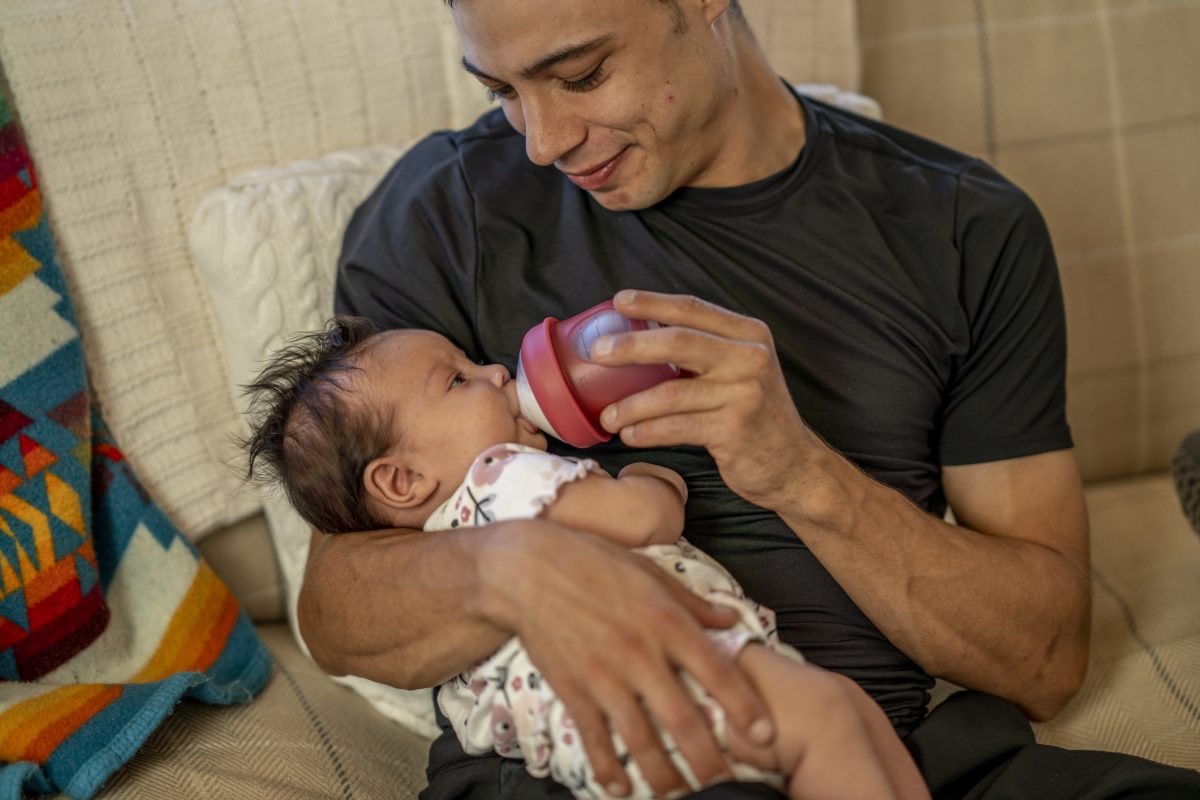Breast/chestfeeding can be tricky, particularly at first. It’s challenging to get a latch and navigate near-constant feedings.
It can also be an incredible bonding experience. Breast/chestfeeding is about more than food. The snuggles, the gappy grins, and the glances only the parent and baby share are moments to treasure. Sometimes, babies love nursing so much that they don’t want a bottle.
Though flattering — especially if the baby and parent got off to a challenging start — bottle refusal can also be stressful. The lactating parent may need to return to work or want to go on a date night, and there’s no shame in either. Baby needs to eat, though.
It’s possible to work through bottle refusal in a breastfed baby gently and compassionately. Here are some tips.

Practice before the big day
The first day at daycare or time with a babysitter — even if it’s another family member — will be stressful for the parent and baby. You want to avoid adding in another wrinkle by having the temporary caretaker introduce a bottle.
If you know you are returning to work or attending a wedding on a specific day, start introducing one bottle every couple of days beginning three weeks before.
Ideally, the introduction of a bottle to breastfeeding babies happens at least three to four weeks after the baby is born and direct breastfeeding is established. However, that’s not always possible, particularly in the U.S., which lacks federal paid family leave.

Mimic the breast
Remember, direct breastfeeding doesn’t have to be all or nothing. An occasional (or even daily) bottle and breastfeeding can go hand-in-hand. Nursing babies have to put a little effort into eating. They stimulate the letdown by sucking, which gets the milk flowing. This act can differ from a bottle. Fast-flow nipples give instant gratification.
For a breastfed baby, this flow can also feel overwhelming. Paced feeding, also known as responsive feeding, mimics the flow of the breast. Use the slowest flow nipple possible available for your baby’s bottle, typically a premie nipple or size 0 or 1.
- Hold the baby semi-upright, and support their head and neck with your arms.
- Draw the nipple from the baby’s nose to their mouth, as you would when offering the breast.
- Allow them to open their mouth to latch onto the bottle nipple.
- Hold the bottle parallel to the floor and let the baby begin sucking.
- As the baby sucks, fill the nipple about halfway and allow them to take about three to five swallows.
- Then, tip it downward to give them a break.
- Repeat this process until the bottle is half empty.
- Then, burp and do the same on the other side.
It’s important to remember that this is not about withholding food from the baby but mimicking breastfeeding. Most importantly, paced feeding allows the baby to control the feeding instead of having a caregiver forcibly feed them at a pace much faster than usual.
If your baby isn’t having it and is older than six months, consider trying a straw cup.

Leave the home
Sometimes, if a baby sees the breastfeeding parent, they want the “real deal” instead of a bottle. It’s understandable — the two of you have created such a strong bond. Consider having the lactating parent out of sight so they are out of mind during the feed. You can have the caretaker text you updates and come home if it’s not working.

Make it a multi-sensory experience
If possible, use your own expressed breast milk. You can remove this milk by pumping in between feedings, though you may need to do that several times to work up to a full feed if your baby is an efficient nurser. This step will allow your baby to have the milk they are used to instead of having to adapt to the taste of formula. Remember, pumping is like breastfeeding in a bottle.
Also, using something that smells like the lactating parent, such as a shirt or blanket, may help the baby associate the bottle with breastfeeding.

Keep calm
Bottle refusal can be stressful for everyone. Babies can pick up on this stress, which can only exacerbate the issue. It’s up to the adults to remain calm and compassionate. Remember, new things can be stressful for little babies who don’t have much life experience. If you find yourself getting stressed, take a breath. Consider passing the baby off to a partner or another helper so you can leave the room and decompress before trying again.
Though bottles can be a necessary part of breastfeeding journeys, not every baby wants to take them at first. Bottle refusal in breastfed babies is challenging, but it’s possible to work on it. Practice and paced feeding to mimic the breast are two ways to help the baby get used to a bottle. It’s best to use expressed breastmilk if possible — the taste can make it seem like breastfeeding in a bottle. It’s important to stay calm. Stress won’t solve the issue, even though it’s challenging not to be worried about your baby. If you’re having trouble, ask your baby’s pediatrician for a referral to an international board-certified lactation consultant (IBCLC). These professionals have extensive experience working on infant feeding and can give you more tips. One more important step: Make sure to pump to replace every feed while you are away to ensure you maintain your supply so it’s there for your baby when you return.



